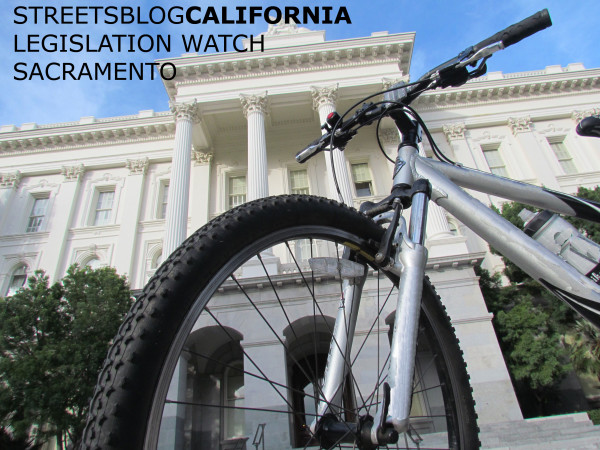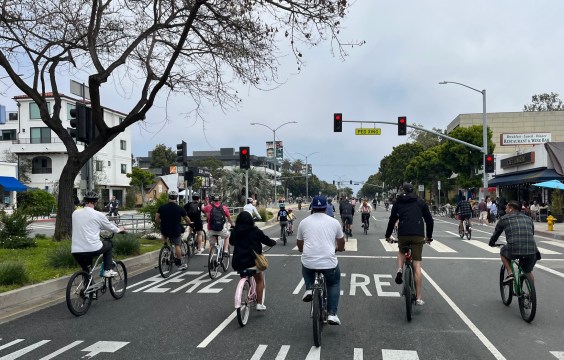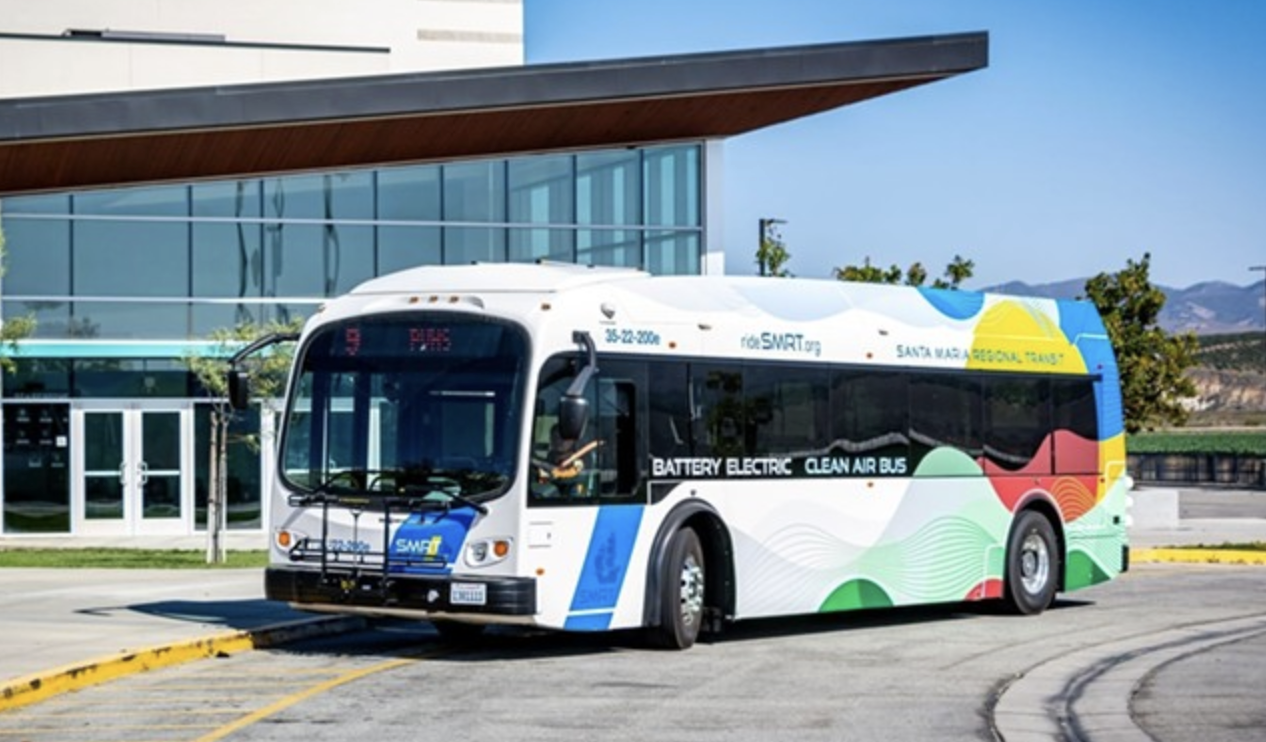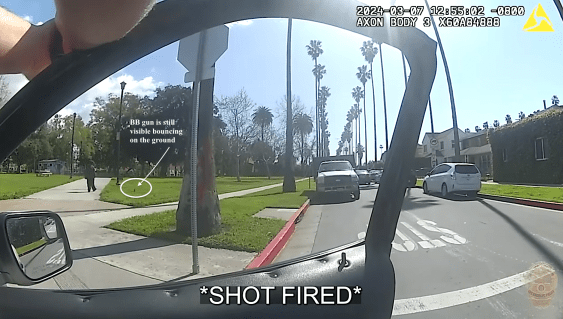California budget negotiations have moved into high gear with the naming of Senate and Assembly members to the bicameral budget conference committee. Leaders of the two bodies named five members each—up from three in previous years—and the conference committee held its first hearing this morning. The committee's job is to find agreement among the three competing state budget proposals before June 15, when it must submit a final version to both houses to be voted on. The final budget agreement must be signed by the governor by the end of the month.
More on the budget, and the transportation issues that remain to be worked out, after the jump.
ACTIVE TRANSPORTATION PROGRAM
Richard Bloom (D-Santa Monica) saw his bill A.B. 2796 pass unanimously yesterday on the Assembly floor, and now it goes to the Senate. The bill requires a minimum of five percent of funds in the Active Transportation Program (ATP) to be allocated for planning and community engagement in disadvantaged communities, and a minimum of ten percent of ATP funds to be programmed for noninfrastructure purposes, such as education and encouragement activities.
The California Transportation Commission (CTC), which is in charge of allocating funds to the ATP, has resisted awarding funds for plans and programs, setting aside only two percent for planning in the most recent round of funding. The commissioners have made it clear that they prefer to fund building things: paths and other infrastructure. While this is good, it has put communities without money for planning—including small, rural, and low-income communities—at a disadvantage in the complex, competitive application process for ATP funding. Bloom's bill is an attempt to make the process a little more fair.
It also acknowledges something that the CTC seems reluctant to recognize: that education and encouragement programs are necessary to get people to change their behavior, and actually use the infrastructure that communities are building. Programs like Safe Routes to Schools have seen their funding threatened and reduced with the CTC's focus on infrastructure.
The CTC's opposition hasn't stopped its progress through the Assembly, but it may mean amendments in the Senate.
BIKES
The “Ride Side by Side” bill, A.B. 2509 from Assemblymember Phil Ting (D-San Francisco), is running into trouble. The bill's author tried to add the word “safe” to existing law that requires a bicycle rider to ride “as close to the right as is either safe or practicable to the curb or roadway edge” but the words in italics above were deleted from the bill's language. Apparently “safe” is just too subjective (and the legalese “practicable” is not?) for some legislators and their staff.
The intent of the bill is to clarify, for law enforcement and everyone, that it is okay for bicycle riders to ride side by side under certain circumstances—for example, while in a bike lane. But even that has met with stiff resistance and perplexity in committee hearings, where legislators, while protesting that they support bicycling, have made it clear they think riding side by side is a dangerous activity that will cause chaos in the streets.
The bill passed the Assembly and has been referred to the Senate Transportation and Housing Committee.
BUDGET
The California Bicycle Coalition has issued an “action alert” on the budget, urging people to contact their legislators and encourage them to support increased funding for the ATP while they negotiate the details. The Assembly and Governor's proposals includes this increase, but the Senate version does not. A call is especially urgent if you live in a district represented by one of the Budget Conference Committee members (see end of this post for a list of members).
The bicameral conference committee negotiations will focus on areas where the three budget proposals—Senate, Assembly, and Governor—differ. In regards to transportation, that includes discussion of revenues from the cap-and-trade program as well as regular expenditures on transportation. In his budget proposal, Governor Brown had proposed several new sources of funding, including a new vehicle registration fee, raising gas taxes, cost-saving reforms by Caltrans, and quicker repayment of loans from general funds back to transportation. However, none of that new funding was included in the Senate budget proposal.
Instead, discussion of new funding would happen as part of the bill-making process, not the budget process. That means folding it into the ongoing, seemingly moribund, Transportation Special Session, which was given the task of coming up with a funding solution and hasn't yet produced any agreements. This is largely because Democrats are proposing raising gas taxes, which have shrunk to uselessness, and Republicans are sticking to the party line that any taxes are bad.
Also to be resolved are questions about allocations from cap-and-trade. Forty percent of the revenues from last year's program, about $1.4 billion, were left unallocated in last year's budget, and the three budgets differ on how to deal with this.
The Assembly proposal largely follows the Governor's lead, although it would redirect his proposed $100 million for the undefined “Low Carbon Roads” program to the existing Active Transportation Program. The Senate proposal does not include money for either of those, and furthermore explicitly rejects all the governor's proposals on the unallocated cap-and-trade revenue. They did this “so that discussions between the Legislature and the Administration can continue,” in other words, taking the subject out of the budget process and giving them more time to kick it around.
Interestingly, the Assembly budget committee developed a set of Principles for Cap-and-Trade, which were to:
- Balance cost effective emission reduction and meaningful community co-benefits
- Prioritize natural resources, clean vehicle rebates, energy efficiency, and transportation and transit
- Begin efforts to allow the legislature to provide statutory clarity to cap-and-trade post 2020
That last point is especially urgent, given the disappointing results from the most recent cap-and-trade auction. After producing about $500 million at each quarterly auction for the last few years, the most recent one made only $10 million, and speculation about what caused the poor results is wide-ranging. It's likely that some part of it is due to the fact that “pollution credits” for future years are auctioned off, and since it is only programmed out until 2020, the value of those future credits is uncertain.
So settling the future of cap-and-trade is crucial, and better done sooner than later.
The Assembly's set of principles could be a model going forward for other issues too. Perhaps the Special Session should focus on creating guiding principles for transportation, rather than trying to deal with specifics like how much money should come from where and how much should go to what.
The conference committee includes five members each from the Assembly and the Senate. Assembly members, named late in the day yesterday, are:
- Chair Phil Ting (D-San Francisco), chair of the Assembly Budget Committee (the conference committee chairmanship rotates between the Senate and the Assembly each year)
- Richard Bloom (D-Santa Monica), chair of the Budget Subcommittee on Natural Resources and Transportation, and a champion of active transportation and sustainable streets
- Lorena Gonzalez (D-San Diego), chair of the Assembly Appropriations Committee
- Jay Obernolte (R-Hesperia)
- Kristin Olsen (R-Modesto)
Senate members are:
- Mark Leno (D-San Francisco), chair of the Budget and Fiscal Review Committee
- Loni Hancock (D-Oakland), chair of the Public Safety Committee
- Ricardo Lara (D-Bell Gardens), chair of the Senate Appropriations Committee
- Jim Nielsen (R-Gerber)
- Patricia Bates (R-Laguna Niguel)
Email tips, alerts, press releases, ideas, etc. to melanie@streetsblog.org.
For social media coverage focused on statewide issues, follow Streetsblog California @streetsblogcal on Twitter, or like our Facebook page here.





